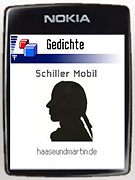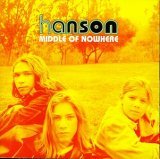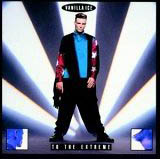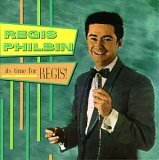Wired profiles Amp’d Mobile, a new service launching this fall that will offer subscribers a wide array of “mobile entertainment” options on a specialized handheld device. Amp’d has marshalled a vast amount of venture capital to bring the cellphone to its full potential as a catch-all media device – video console, gaming handset, ebook reader, web browser, and, if your brain hasn’t been totally fricasseed by that point, still a good old-fashioned telephone.
Amp’d targets consumers in their mid-20s to mid-30s – the bracket that is the most gadget-crazed, the most entertainment-hungry, as well as the most mobile, or so the reasoning goes. At the very least, Amp’d might serve as a catalyst for Verizon, Sprint and the other big mobile service providers to move into this sweet spot of media convergence. It certainly seems that things are going that way.
Monthly Archives: August 2005
play station portable as online reading device

The new updated Sony PSP portable gaming device will include a web browser. That gives it games, film, photo and web – the most comprehensive pocket instrument out there. But for the time being, it’s read-only. Without a stylus, or virtual keyboard, many of the web’s more interactive elements will be unavailable.
amazon shorts: short literary works delivered digitally
Amazon Shorts offers 49¢ downloads of short fiction and nonfiction in .pdf, html and text-only email, seemingly without copy or printing restrictions. Amazon a publisher? The chapbook reborn? Not quite. Amazon Shorts is primarily a marketing program, available only to established authors who have other titles to sell – a sort of appetizer course to encourage larger book purchases. But it’s probably suggestive of where advertising in general is headed.
Television entertainment was originally conceived as a way to create a captive audience for advertising. Now, consumers have greater and greater ability to tune out the ads and focus on the entertainment – fast-forwarding on Tivo, or, on the web, clicking through, or closing the pop-up window. As a result, marketers are trying to figure out how to make the ads destinations in themselves – to develop a format where the ad and the entertainment are inseparable, even indistinguishable. Recall the Superbowl, where high-budget, elaborately produced ads are as much an attraction as the game itself (some would say more). Or BMW Films, creator of “The Hire” – a series of short films by major international directors, starring Clive Owen and, of course, a sexy Z4 Roadster.
Expect more of this short form blend of advertising and entertainment in film, certainly, and even (if the “Shorts” series is any indication) in books.
copyright 101
Richard Lanham, the godfather of electronic text, has written a wonderful piece in Academic Commons calling for a course in copyright for all undergraduates. Lanham, a UCLA English professor who has had a significant second career as an expert witness in copyright cases, gives one of the more cogent summaries of the copyright morass we find ourselves in as the digital tide overwhelms previous notions of property and ownership.
hot dogs, spambots, and japanese comics
Deleting my way through our daily torrent of spam, I came across a bizarre item that is, if not interesting, at least slightly amusing. The MSN-run site for one of Japan’s major newspapers, Mainichi Daily News, trackbacked to my post from yesterday about japanese cell phone comics. They planted a link to a story about a part-time employee at a Nathan’s Hot Dog stand in a popular Japanese comics market. Apparently, the employee made some disparaging comments on his personal blog about obsessed comic book fans (known as “otakus”), creating a small uproar and leading Nathan’s Japan franchisees to issue a public apology.
Unless this is all some joke (it can be hard to tell), they seem to have found my post based on the keywords “japan” and “comics.” Whether it was a robot scouring the web or a Japanese editorial sub-sub with poor english, I’m not sure. But it’s disturbing that a major newspaper might be resorting to spam to promote itself. That’s usually the province of online poker and penis enlargement (oh god, the robots just perked up, I’m sure).
In a way, the trackback does indirectly support my post, in so far as the Nathan’s Hot Dog incident underscores the significance of comics in Japanese culture. But, c’mon Mainichi…
“talkr” lets you listen to your favorite blogs
Talkr, a new online software, transforms your favorite blogs from text to spoken word and provides downloadable podcasts for your mp3 player. I listened to a few free samples provided on their site and was pleasantly surprised by the non-robotic voice. I love this software not only for the convenience, but also for the accessibility it will offer to sight-impaired users.
in japan: comics via mobile phone
Another mobile lit item. Sony is increasing its mobile comics publishing service, offering around 300 popular “manga” titles to Japanese subscribers in the coming year.
From USA Today (via Smart Mobs):
Cell-phone comics use a technology called Comic Surfing, developed by Tokyo-based venture firm Celsys, which takes viewers through manga stories at a carefully calculated speed and sequence.
The manga frames are specially formatted to fit on tiny mobile phone screens. Pop-up frames and vibration during action scenes add to the drama. Cell-phone comics with preprogrammed sound effects are also coming soon…
Related:
“How Mobile Phones Conquered Japan” in Wired – discussing the new book “Personal, Portable, Pedestrian: Mobile Phones in Japanese Life”
and
“novels on your phone” in if:book – about Japanese cell phone fiction
schiller’s poetry for mobile phones

![]() This year, Germany celebrates the bicentennial of the death of Freidrich Schiller. As part of the commemoration, you can download a java application to your mobile phone containing 20 of his best known poems. (via textually)
This year, Germany celebrates the bicentennial of the death of Freidrich Schiller. As part of the commemoration, you can download a java application to your mobile phone containing 20 of his best known poems. (via textually)
death of the album? (or, for that matter, the novel?)
Warner is trying out a new business model for selling music over the web (BBC, CNET). The new “e-label” will sell music exclusively online (no CDs) in three-song clusters, abandoning the conventional album format and allowing emerging artists to prove themselves gradually, without the pressure of a sink-or-swim album deal. What would Sgt. Pepper say?
Crusty aficionados have for some time been lamenting the death of the album in the age of .mp3s, file-sharing and iTunes, where kids are growing up with vast, shifting libraries of individual tracks instead of meticulously ordered, packaged collections. While it’s true that a generation of shufflers may not have much respect for the integrity of albums, it’s important to remember that most albums don’t have all that much integrity to begin with. When the recording industry moved from singles to the longer format of albums, it’s not as though there was a corresponding growth in the amount of quality material. As a result, most albums consist of a couple of hit singles padded with filler. No one should mourn the disappearance of this sort of album.
Albums the world would be better off without:

![]()

![]()

Making a good album is difficult, not unlike putting together a good collection of short fiction, or, in the case of concept albums, an entire novel. I like Warner’s idea because it allows musicians to mature gradually, building a fan base and working their way up to the longer form. In turn, one-hit wonders can fizzle out naturally without burdening the world with rotting, opus-sized legacies.
I’m not too worried about the death of the album, at least not for some time. Artists that are capable of producing worthwhile albums will continue to release long format work, and kids will continue to pick and choose songs, and shuffle away carefully chosen track orders. But at the same time, they will make eclectic playlists, some of them uncovering hidden connections that can only be made manifest by porous, digital libraries. It seems to me that it will be a healthy give and take. Just as I’m confident that the novel will survive in an age of scattershot online reading, so will the album in the age of the iPod.
(One way to foil the shufflers would be to release albums in one big track. Remember “Thick As A Brick”?)
continuous computing: backchannels as impromptu textbooks
“Continuous computing is an emergent phenomenon–a complex pattern of social behaviors that arises from the use of a variety of simpler digital tools. It advances in unexpected directions as people find innovative ways to put these commercial and open-source technologies to use in their social lives.”
The above quote is from Social Machines, an article by Wade Roush, recently published in Technology Review. According to Roush, wireless devices have created a “virtual information field” that allows us to “both pull information about virtually anything from anywhere, at any time, and push their own ideas and personalities back onto the Internet — without ever having to sit down at a desktop computer.” This phenomenon of constant connectivity is changing the way we learn and the way we participate in classroom environments.
In classrooms and lecture halls with open access to wireless networks, students can use cellphones, laptop computers, and other wireless devices to silently converse (via text or instant messaging systems) with one another or to surf the net during class. This secondary layer of classroom communication is known as the backchannel. Some instructors recognize the inevitability of the backchannel and are experimenting with how to organize these activities in a productive manner.
The key characteristic of the back channel is that it allows students to participate in the “push/pull” of constant connectivity that Roush speaks of. Students can “pull” supplementary information from the web and “push” their interpretation of the facts or their ideas and queries about the ongoing lecture into the backchannel social space. The University of Southern California’s Interactive Media Division has experimented with multimedia back, front, and side channels. Here is a brief description of the Backchannel options for USC IMD Speakers outlined by Justin Hall.
We have three primary areas of backchannel work. Speakers, participants, feel free to review these various scenarios and let us know what you think. We have fourteen screens up on the walls of the lab, so these various functions typically share visual space with a speaker’s own supporting visual materials.
Backchannel During a speaker’s presentation, students with laptops will chat about the topics at hand. Typically, we post the thread of comments on two-to-three of the fourteen screens.
Frontchannel We can provide a special area just for questions for the speaker. Then, during the talk, if someone has a clarification they’d like, or a question they want to ask, the speaker can see that question pop up on a small monitor at the front of the room. The speaker can answer it when they feel ready!
Sideshow We have several students who are trained expert Google Jockeys. If a speaker would like to have their own presentation supplemented by a stream of images, statistics, background articles, as they talk, they should let us know and we will arrange for students to run the sideshow presentation on their research.
These various areas represent experiments in collaborative multimedia-internet enhanced learning. We welcome your suggestions! And if you feel that these might be too distracting, we’re happy to reign in some of our participation during the presentation. The intent is to involve students in the lecture and to allow people to use the tools at their disposal to engage a speaker’s research in real time.
A variety of responses to the backchannel were expressed in a January 2005 online discussion entitled “is the backchannel working.” Some students found it “useful (for keeping track of the points, for cross reference, and for fact checking), immersive, stimulating and engaging;” while others found it, “distracting, unnecessary, detrimental, irrelevant, pointless, alienating,” and even “rude” as evidenced in this exchange:
What ever happened to giving your full attention to the guest speaker? Since when is carrying on a side conversation an acceptable thing to do? What happened to our manners?
I wish I had saved the logs from last semester. But I recall several presentations where the speaker stopped and asked the group what was going on with that back channel that is so funny. I wonder how the professors who presented last semester feel about this.
Posted by: Shelby at January 31, 2005 07:38 PM
I believe that we are ALL here (professors included) because we were the really smart kids that stared at clouds, wrote stories, drew, and made up games during class. That’s how I feel when my peers are obviously multi-tasking during class or during a presentation. I don’t think it’s rude to multi-task.
I do think it’s rude to type up really dumb jokes or ASCII pictures on the backchannel that are unrelated to the presentation. However, I think it’s really awesome that our professors and our presenters are open to our experiments in multi-tasking and over-stimulation. Especially in the age of the internet, the next gen behind us are going to be so savvy at carrying on multiple conversations and multiple lines of thought simultaneously, I think it’s good to experiment with this instead of putting “miss manners” restrictions on the class.
Posted by: kellee at February 2, 2005 03:37 PM
Although this form of collaborative learning is still in the experimental stage, it seems to have a great deal of potential. Well-run backchannels could serve as improptu, collaborative textbooks. Students and so-called “Google Jockeys” could gather, present, and discuss the supplementary information as the instructor lectures. This process would be inspired by the instructor, but not directed by the instructor.
